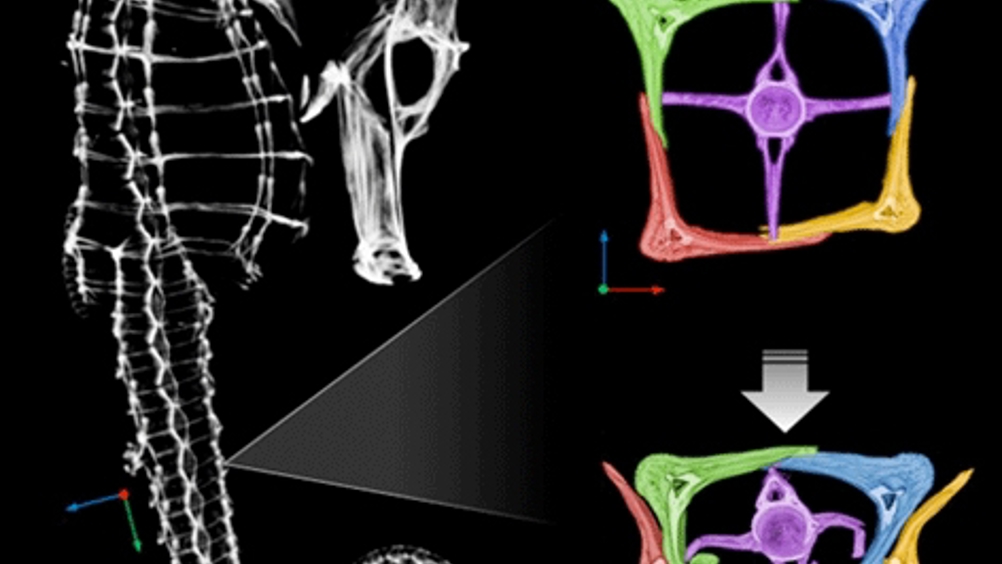Seahorse tail inspires robotic arm team
Researchers at the University of California, San Diego are hoping to create a flexible robotic arm equipped with muscles made out of polymer by mimicking the structure of seahorse tails.

The tail of a seahorse can be compressed to about half its size before permanent damage occurs and this flexibility is due to its structure, made up of bony, armoured plates that slide past each other.
If successfully replicated, the seahorse-inspired robotic arm could be used in medical devices, underwater exploration and unmanned bomb detection and detonation.
UC San Diego engineers, led by materials science professors Joanna McKittrick and Marc Meyers, detailed their findings in the March 2013 issue of the journal Acta Biomaterialia.
‘The study of natural materials can lead to the creation of new and unique materials and structures inspired by nature that are stronger, tougher, lighter and more flexible,’ said McKittrick, a professor of materials science at the Jacobs School of Engineering at UC San Diego.
Researchers took segments from seahorses’ tails and compressed them from different angles. They found that the tail could be compressed by nearly 50 per cent of its original width before permanent damage occurred.
Register now to continue reading
Thanks for visiting The Engineer. You’ve now reached your monthly limit of news stories. Register for free to unlock unlimited access to all of our news coverage, as well as premium content including opinion, in-depth features and special reports.
Benefits of registering
-
In-depth insights and coverage of key emerging trends
-
Unrestricted access to special reports throughout the year
-
Daily technology news delivered straight to your inbox










Apprenticeship Funding Cuts to Cost Employers £214m
I had no idea the taxpayer was funding such an advanced level of education. Certainly graduates and post-graduates don´t receive comparable financial...